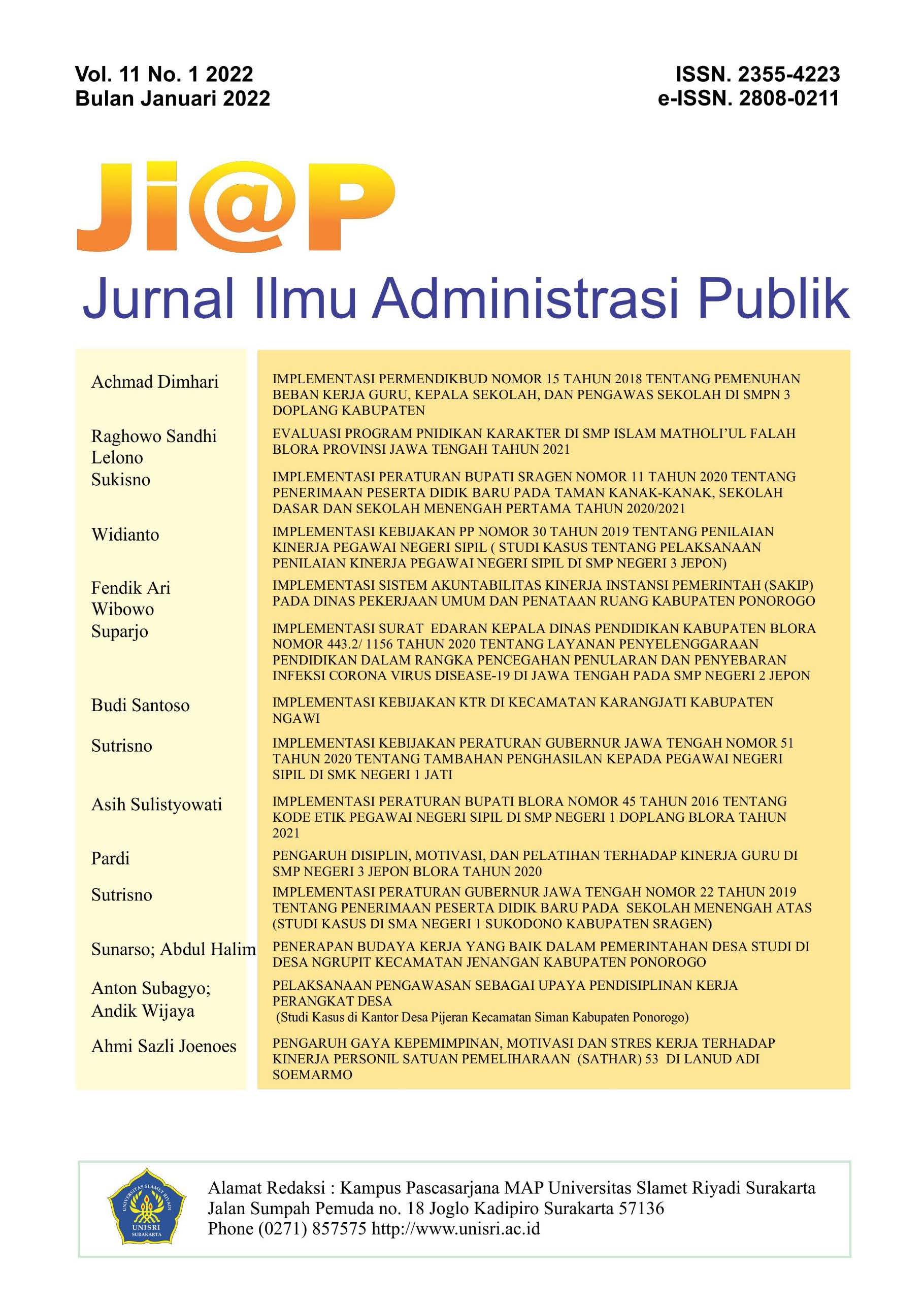IMPLEMENTASI KEBIJAKAN KTR DI KECAMATAN KARANGJATI KABUPATEN NGAWI
DOI:
https://doi.org/10.33061/jp.v11i1.1557Abstract
This study aims to analyze and describe the implementation of the Ngawi
Regent's regulation policy number 14 of 2019 regarding the instructions for
implementing regional regulations regarding smoke-free areas in the Karangjati
District, Ngawi Regency. This type of research is descriptive qualitative. Data
collection was carried out through interviews with the person in charge of the KTR
such as the sub-district head, the head of the health center, the village head and
reinforced by the responses of community leaders in the Karangjati sub-district,
Ngawi district. Data analysis using Miles and Huberman Model. Implementation
of the research refers to the theory of Van Metter and Van Horn. The results of the
study found that the implementation of the policy has not run optimally, as
evidenced by the occurrence of violations, there are no special employees who
regulate the implementation of the KTR policy and the funds to implement the KTR
policy are still limited, the implementing agent has not obtained the Regent's
Decree, public awareness of the dangers of smoking and orderly implementation of
the policy. KTR is low, coordination between agencies is not optimal because it
focuses on its own work area, and environmental conditions around KTR do not
support the implementation of KTR policies. Suggestions that can be submitted are
(1) it is necessary to appoint an implementing officer for controlling KTR policies
to be strengthened through a Regent's Decree; (2) Provision of special funds to
create various kinds of socialization media about KTR.
Keywords: size and policy objectives, resources, characteristics; attitude or
inclination, communication
Downloads
Published
How to Cite
Issue
Section
License
Copyright (c) 2017 JI@P

This work is licensed under a Creative Commons Attribution-NonCommercial 4.0 International License.
Authors who publish this journal agree to the following terms:
- Authors retain copyright and grant the journal right of first publication with the work simultaneously licensed under a Creative Commons Attribution License that allows others to share the work with an acknowledgement of the work's authorship and initial publication in this journal.
- Authors can separately make additional contractual arrangements for non-exclusive distribution published by the journal (e.g., publish it in a book), with an acknowledgement of its initial publication in this journal.
- Authors are allowed and encouraged to send their work via online (e.g., in the institutional repositories or their website) after published by the journal.













